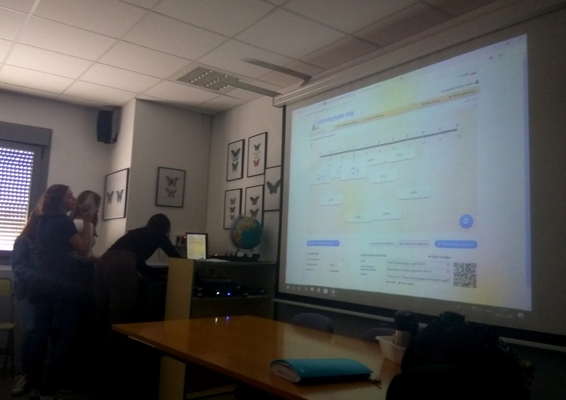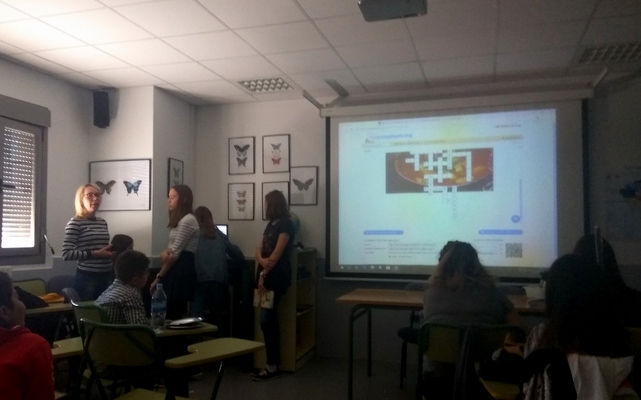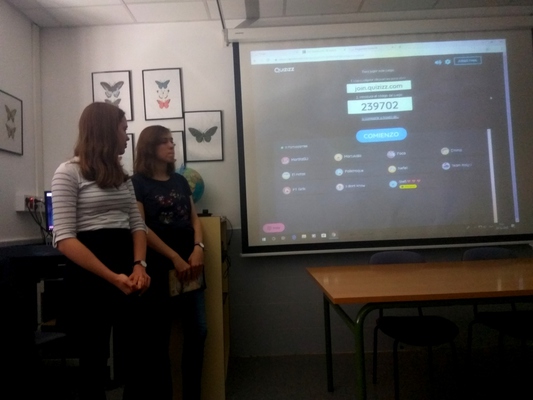This page lists the activities presented by the project teams at the C1 meeting in Spain, whose topic was teaching and learning with the use of ICT
Each team presented at least 2 activities, one in the Maths and Science category and one in Art and Humanities category.
SCIENCE and MATHS
SPAIN:
ITALY: PhET simulations and ph experiment in lab
INTRODUCTION:
The pH is a measure of hydrogen ion concentration. In order to measure the acidity or alkalinity of a solution, the pH scale is a usable indicator which helps to distinguish whether a substance is an acid or a base. Its scale ranges from 0-14. A pH that is 7, is neutral. 7 below is acidic while 7 above is basic.
In this activity, by the use of the pH indicator we had to know the pH level of the given substances and how the addition of water to these substances could affect the acidity or basicity of its pH level.
Step 1: simulation
Basics simulation explores the pH of acids and bases in everyday life, and how pH is affected by dilution with water.
Through the use of simulation found in https://phet.colorado.edu/sims/html/ph-scale-basics/latest/ph-scale-basics_en.html;
We have been be able
-to know each pH level of the 5 different given basic substances;
-to know how dilution affects the pH level of the given substances.
PROCEDURE:
There were 11 substances in the drop-down list in the simulation, but we have analyzed only five of them: hand soap, coffee, orange-juice, milk and soda pop.
Name of substance used pH level Acid Base
Milk
Coffee
Soda pop
Orange juice
Hand soap
The volume of substance and the water to be used was given in a table. We have used the pH indicator in the simulation to determine the pH of the substances with a pure water added into it.
Name of Substance (Hand Soap,Milk,Coffee,Orange juice,Soda pop)
Name of substance 0.10L of substance 0.15L of water
Name of substance 0.15L of substance 0.10L of water Acid or base?
Name of substance 0.15L of substance 0.30L of water
CONCLUSION:
Based on the information that you supplied in the Table I. What substance has the most acidic level of pH? The most basic? How can we say so?
What is the pH scale of pure water?
When pure water is added to an acid substance, will the pH of the substance increase or decrease?
When pure water is added to a base substance, will the pH of the substance increase or decrease?
Step 2: “in vivo”
We have done in laboratory ph measurement of the same substances analysed in simulation and we have shown it in our presentation.
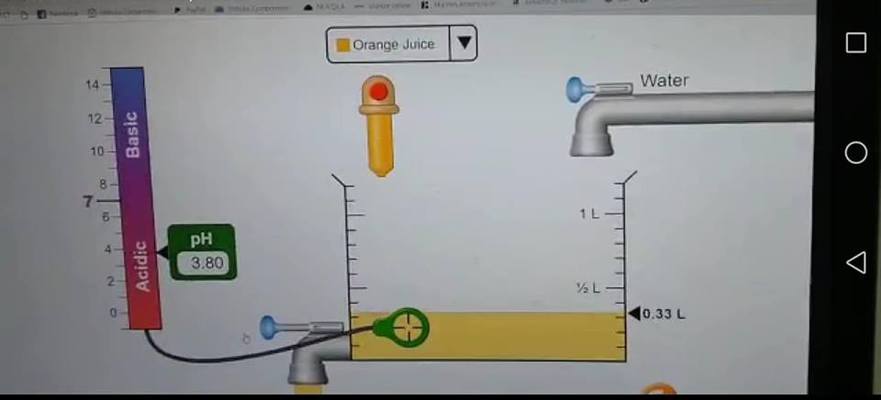
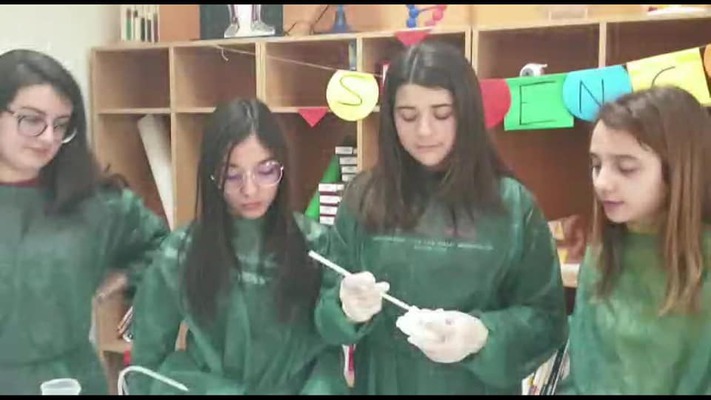
GREECE:
ROMANIA:
Spain was the first opportunity we had to meet and share our experience and knowledge. The first meeting was held in Madrid, at I.E.S. “Gerardo Diego” School, where the project teams got together in an attempt to find the prototype of the teacher whose teaching strategies are well-adapted to our changing world in terms of teaching, reinforcing the information and assessing it. More than that, all the participating schools stated their belief in the importance of quality educational services.
Our students discovered how important it is to explore our similarities and also to preserve our differences. The Romanian team, wearing traditional shirts, had a presentation on a well-known Romanian legend (“Baba Dochia” or “Dochia, the old woman”) which was approached in class in a multi-disciplinary manner, putting together information and competencies from different perspectives: English, religion, geography, and art. The final outcome of the activity was a video with a dramatization of the folk story.
As for the sciences, the Romanian pupils explained a geometry activity built around the angles of a triangle, the challenge in this case being to think of mathematical problems in English. Thus, in both situations, the students were able to transfer knowledge from one area into another and to put to work various skills in order to complete the assignment.
A bonus of the visit to Madrid was the opportunity to see cultural monuments famous worldwide: the Prado Museum and Reina Sofia.
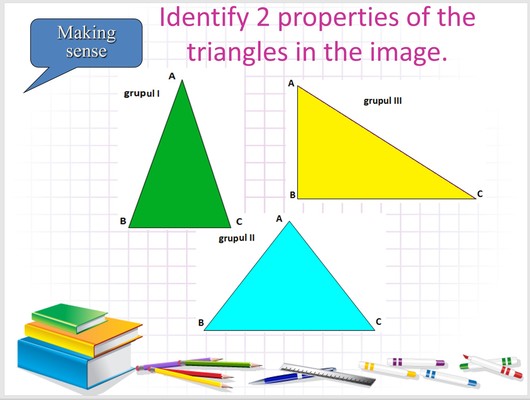
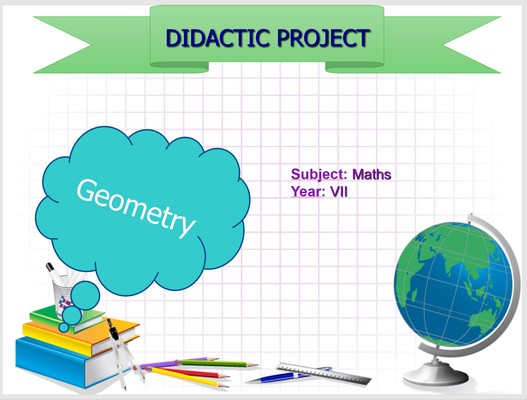

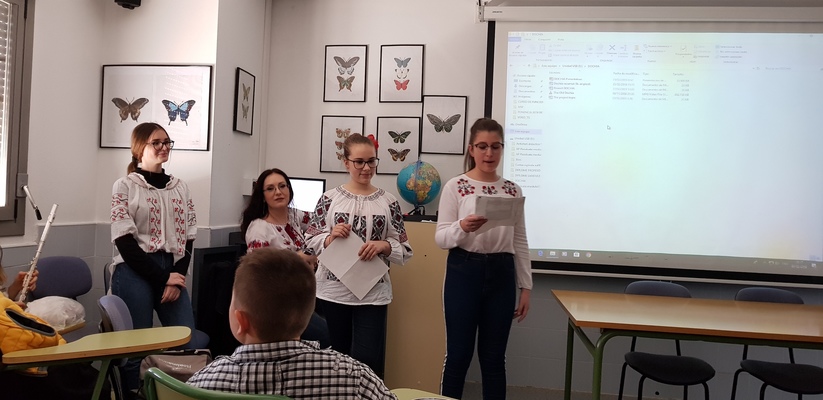
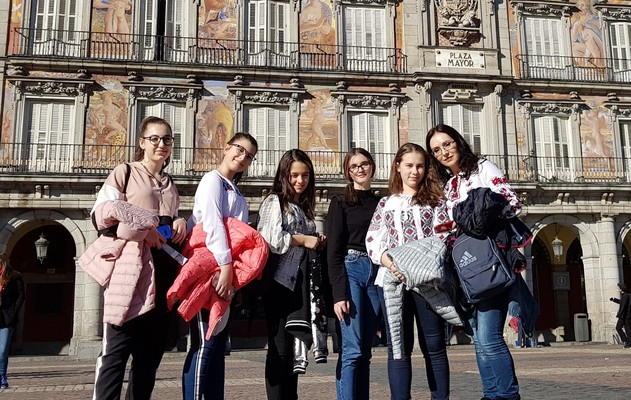


PORTUGAL:
Physics lesson on Star Constellations and Nebulas (Padlet and Kahoot).
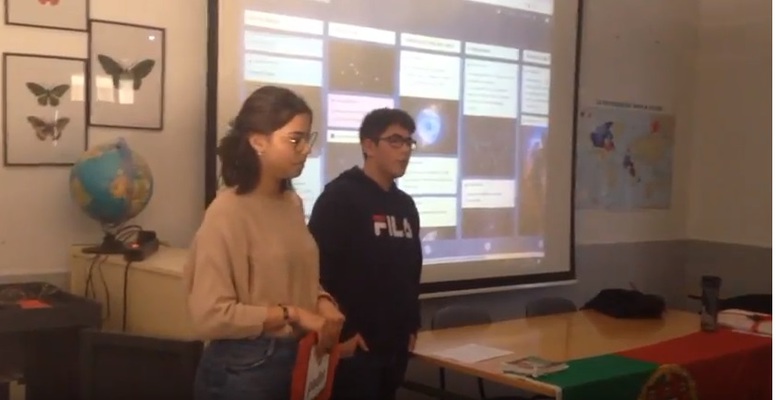
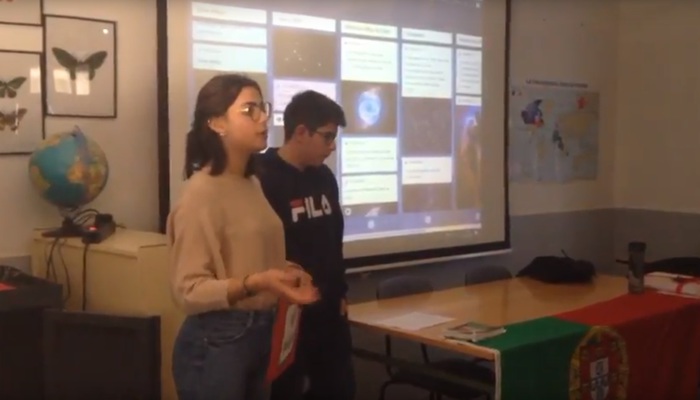
The 12-year-old Physics and Chemistry students prepared a Padlet presentation, digitally displaying the material taught during a lesson. This Padlet was presented by our 15-year-old students, Bárbara and Leandro, as a free application in which students created an online bulletin board utilized to display information about Star Constellations and Nebulas.
This work was carried out in order to explore Space better and to introduce the Erasmus + project in our School. It was done in the padlet platform and it was presented in Spain.
This work was carried out in order to explore Space better and to introduce the Erasmus + project in our School. It was done in the padlet platform and it was presented in Spain.
This project developed some topics that students studied and that are related to Space. These themes are: Ursa Minor, Sirius Star, Cat's Eye Nebula.
Ursa Minor
Ursa Minor is made of seven stars and it is thought to have been identified by Thales of Miletus at around of 600 B.C. The main stars are: Alpha UMi (Northern star), Gamma UMi , Epsilon UMi.
The Polar Star is located in the northern hemisphere and it is 430 light years from us. The Northern Star in the majority of the population is considered to be a very bright star, but it is actually a star like others.
Sirius Star
The Sirius Star is 8.6 light years away and was seen for the first time by Ancient Egypt which is registered on the most ancient astronomy records.
Cat's Eye Nebula
The Nebula is located at 3300 light years, it was formed about 1000 years ago and was first seen by William Herschel on February 15, 1786.
Then our students presented a consolidation activity done by teacher Carla Bernardino, which was prepared in Kahoot as a collection of questions on the specific topic – Star Constellations and Nebulas. This application allowed designing a quiz where answers were asked in real-time about the topic, creating a social, fun and game-like learning environment.
(C1)-Padlet.mp4
POLAND:
Biology lesson on types of bacteria.
The student prepered a Prezi presentation showing the material to be taught during the lesson.
After that, the pupils could see and taste different shapes of crisps and Haribo jelly beans grouped into categories (bacteria types). Each plate was labeled with the name of proper bacteria
The consolidation activity was prepared in PLICKER - application allowing to design quizes where answers are given using printed codes. The codes are later scaned by the teacher with a mobile phone's camera.
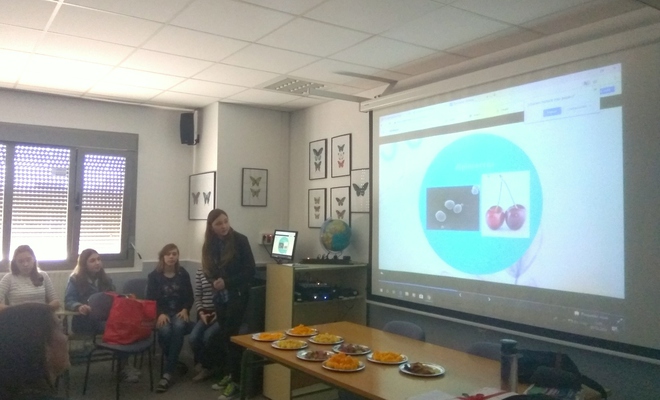
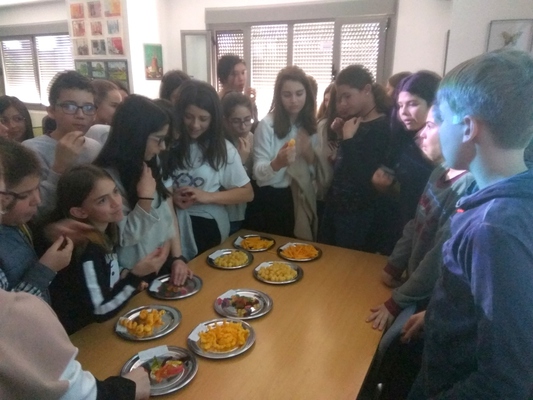
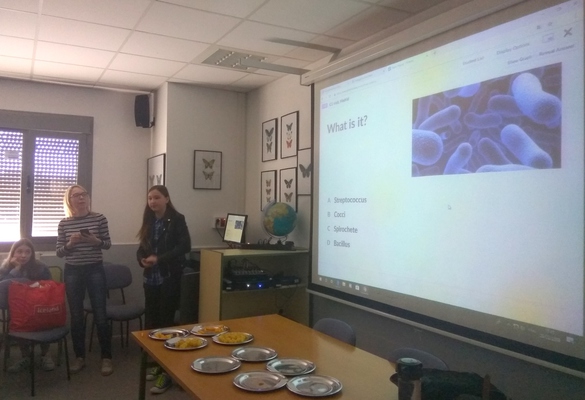
ART and HUMANITIES
SPAIN:
ITALY: Art and Technology, school for change: Michelangelo Pistoletto e il Terzo Paradiso.
Our school has always been committed to pursuing issues concerning the environment and eco-sustainability. A few years ago we were impressed by the Italian artist Michelangelo Pistoletto, one of the most important exponents of the Poor Art, who is also very famous for the creation of the symbol of the so-called "THIRD PARADISE”.
- The Third Paradise is the fusion between the First and the Second Paradise.
- The First Paradise is where human beings were totally integrated into nature
- The Second Paradise is the artificial world. This paradise is made up of artificial needs, artificial products, artificial comforts, artificial pleasures and any other kind of artifice. This artificial world has generated the degradation and consumption of the natural world.
People thought that the too advanced technology which had caused pollution and disasters would lead the world to its end on 21st December 2012.
But today we know that the world didn’t finish on 21st December and this date has become the Rebirth Day.
The symbol of the Third Paradise uses the mathematical sign of infinity by adding a central circle.
The two opposing circles signify nature and technology, while the central ring is the conjunction that indicates the Rebirth.
The Third Paradise (that is a new sign of infinity) is the third phase of humanity, where there is a balanced connection between nature and artifice.
Through Pistoletto’s works we have realized that THE RECYCLE CAN SAVE THE WORLD AND DEVELOP THE INGENIALITY and we share his idea: ART CAN BE FOR CHANGE.
Two years ago, we had the opportunity, through a project, to investigate topics and problems concerning the relationship between man and nature, environmental degradation and the risks of the ecological disaster.
Thanks to this activity we have understood that also through art we can talk about ecology and social responsibility. We didn’t think that an artist could be interested in environmental bio-sustainability and solutions to the very serious problem of pollution and consumerism.
We have instead discovered that, if we want, we can contribute to improve the world and solve the problems that the man himself created with an uncontrolled use of natural resources. We reflected on the idea of changing lifestyle and habits that are harmful to us and to the future of all humanity.
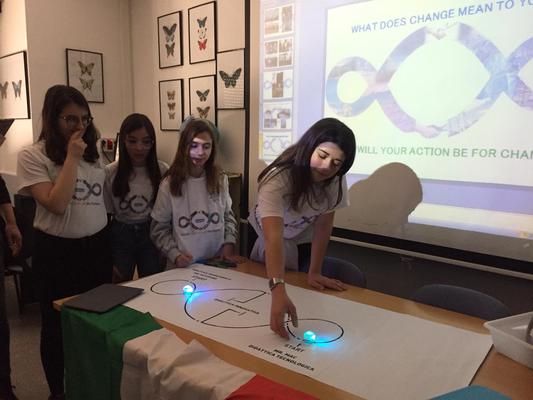
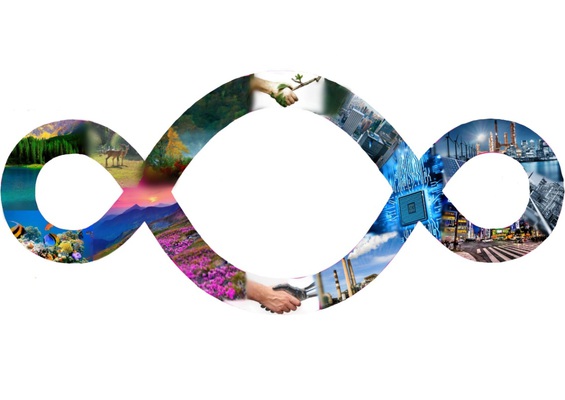
GREECE:
ROMANIA:
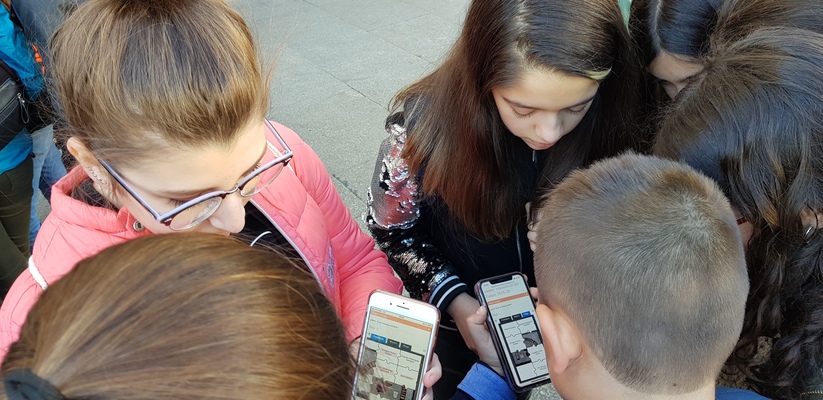
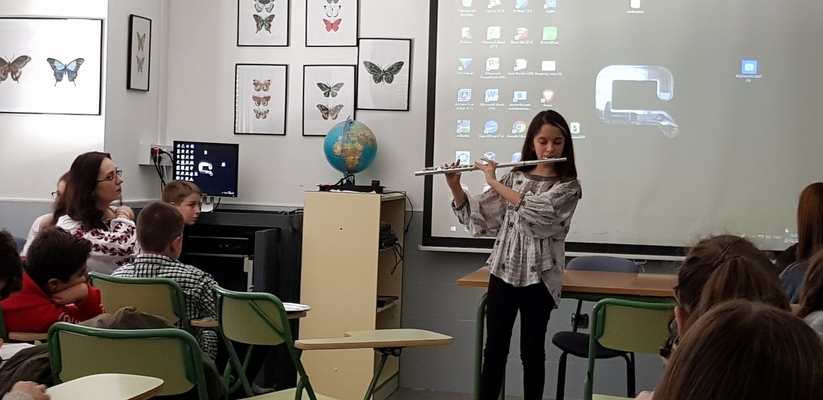
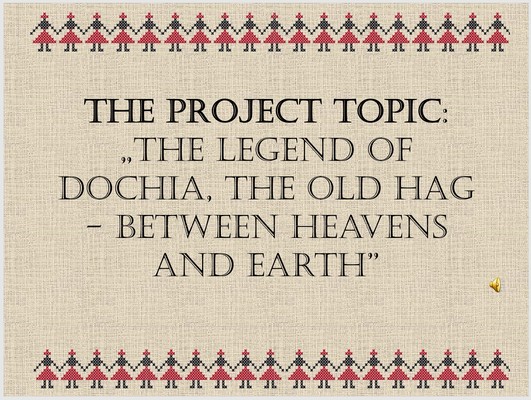
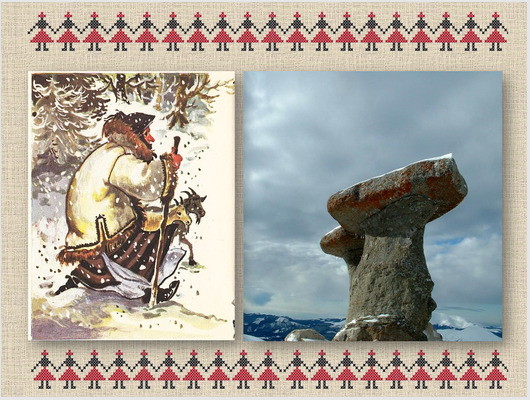
PORTUGAL:
Prezi and SurveyMonkey on Geography.
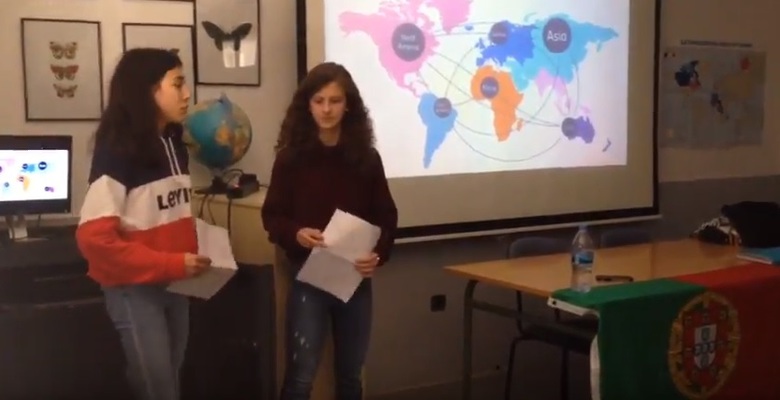
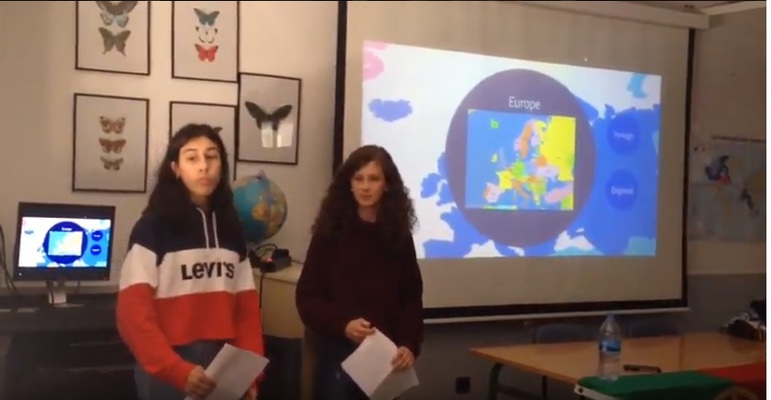
Our 15-year-old students, Madalena and Rita, presented their own demonstration, which was shown in English Class to their fellow students, about the given topic. This was a school class subject presentation, in this case, Geography, as part of a governmental project introduced this year in Portuguese schools called Flexibility and Curricular Autonomy Application Project. This project allows teachers and students to teach and apply different forms of class organization, uniting material from different subjects, or even creating new ones.
Madalena and Rita used a Prezi software, presenting Countries and Cultures of the World, which is an excellent tool for creating presentations when teaching a class. It allowed our students to zoom in on texts, images and figures, while they were speaking, making it easier for the audience to see the information that the presenters wanted to focus on, generating some impact in the presentation.
The subjects were Geography and History combined, going from continent to continent saying facts about how many countries and their languages and picking 2 countries in each continent and saying facts about them, too.
Starting with North America, they presented 23 countries and the biggest one was the USA. In the USA there are 50 states and its capital is Washington DC.
Then they presented Canada's capital which is Ottawa and its national languages: French and English.
Next, they presented South America and their 14 countries. They all speak Spanish but with a different accent. The exception is Brazil, which speaks Portuguese, also with a different accent from Portugal. Brazil is the largest country in South America and the capital is Brasilia.
Peru's capital is Lima and this is where you can have an Indiana Jones adventure.
Then we have Europe as the “oldest” continent in the world and 2nd smallest continent. In Europe, our colleagues presented Portugal, which is our native country and where everything about it is great. The capital is Lisbon.
They also mentioned the UK. Uk’s capital is London, where there is a queen who is 95 years old.
Next, our colleagues mentioned Africa and Asia but they explained they wouldn’t talk about them to shorten the presentation.
Finally, they mentioned Oceania which has 14 countries and is the smallest continent in the world, in which Australia’s capital is Canberra and 90% of the population live on the coast.
Also they talked about Indonesia's capital which is Jakarta and it is the World's Largest Island Country.
After this, our students presented a consolidation activity using a Survey Monkey software, which is an online survey development cloud-based software that include data analysis and data representation tools. They prepared three consolidation questions in a multiple choice answer exercise in a way to test students’ attention and knowledge about the topics shown in the Geography Prezi presentation lesson.
C1-Prezi.mp4
POLAND:
Various single activities to practice vocabulary on foreign languages lessons
1. LearningApps activity on Spanish numbers to 10.(The whole lesson was actually carried out by the girls with a 2nd grade class).
2. Online crossword on food vocabulary in English. The students type in the answers to find out the correct password.
3. A quizzlet competition (an alternative to a well-known Kahoot) - students use their phones to play the game but have little time to answer thus the game is dynamic and very energetic.
